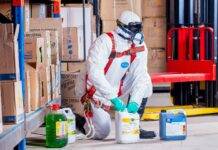
Hazardous Materials Transportation: Compliance and Emergency Response
Introduction
The transportation of hazardous materials presents a unique set of challenges that require strict compliance with regulations and robust emergency response protocols. This article delves into the critical aspects of ensuring compliance during hazardous materials transportation and the importance of well-prepared emergency response measures.
Understanding the Complexity of Hazardous Materials Transportation
- Diverse Nature of Materials
- Chemical Substances: Hazardous materials can encompass a wide range of chemical substances with varying degrees of risk.
- Physical Forms: Materials may exist in liquid, gas, or solid forms, each requiring specific handling procedures.
- Regulatory Framework
- Multifaceted Regulations: Compliance involves adherence to a complex network of local, national, and international regulations.
- Continuous Updates: Regulations are subject to periodic updates, necessitating continuous awareness and adaptation.
Importance of Compliance in Hazardous Materials Transportation
- Safety of Personnel and Environment
- Minimizing Risks: Strict compliance minimizes the risks of spills, leaks, or accidents during transportation.
- Protecting Ecosystems: Ensuring that hazardous materials do not pose threats to ecosystems and natural habitats.
- Regulatory Consequences
- Penalties and Fines: Non-compliance can result in severe penalties, fines, and legal repercussions.
- Reputation Management: Adhering to regulations is essential for maintaining a positive corporate reputation.
Key Components of Compliance in Hazardous Materials Transportation
- Proper Documentation
- Accurate Declarations: Providing precise information about the nature, quantity, and packaging of hazardous materials.
- Shipping Papers: Ensuring that shipping papers are correctly filled out and accompany the shipment.
- Packaging and Labeling
- Secure Packaging: Materials must be securely packaged to prevent leakage or damage during transit.
- Clear Labels: Labels indicating the nature of the materials and associated risks must be prominently displayed.
- Driver Training and Qualifications
- Specialized Training: Drivers should undergo specialized training for handling hazardous materials.
- Driver Qualifications: Ensuring that drivers possess the necessary qualifications and certifications.
- Vehicle Compliance
- Properly Equipped Vehicles: Ensuring that vehicles are equipped with the necessary safety features for transporting hazardous materials.
- Regular Inspections: Conducting regular inspections to confirm the integrity of the transportation vehicles.
Enhancing Emergency Response Protocols
- Effective Communication
- Communication Plans: Establishing clear communication plans for immediate response in the event of an incident.
- Collaboration with Authorities: Collaborating with emergency response authorities for seamless coordination.
- Training and Drills
- Regular Simulation Drills: Conducting regular emergency response drills to enhance preparedness.
- Employee Training: Ensuring all personnel involved in transportation are trained on emergency procedures.
- Emergency Equipment and Resources
- Readily Available Resources: Having emergency response equipment readily available on transportation vehicles.
- Collaboration with Agencies: Collaborating with local emergency response agencies for additional resources.
- Post-Incident Reporting and Evaluation
- Immediate Reporting: Implementing procedures for immediate reporting of incidents.
- Post-Incident Evaluation: Conducting thorough evaluations to identify areas for improvement in emergency response protocols.
Conclusion
Compliance and effective emergency response protocols are paramount in the transportation of hazardous materials. By prioritizing accurate documentation, proper packaging, driver training, and robust emergency response measures, organizations can navigate the complexities of transporting hazardous materials while safeguarding personnel, the environment, and ensuring regulatory adherence.
Safety Data Analytics: Leveraging Big Data for Proactive Risk Management
Chemical Safety Engineering: Hazard Identification and Risk Assessment
Frequently Asked Questions (FAQs)
- Why is compliance crucial in hazardous materials transportation?
- Compliance ensures the safe transportation of hazardous materials, minimizing risks, protecting the environment, and avoiding severe penalties and legal repercussions.
- What are key components of compliance in hazardous materials transportation?
- Key components include proper documentation, packaging and labeling, driver training and qualifications, and ensuring vehicle compliance through regular inspections.
- How can organizations enhance emergency response protocols for hazardous materials incidents?
- Organizations can enhance emergency response protocols by establishing effective communication plans, conducting regular training and drills, ensuring readily available emergency resources, and conducting thorough post-incident reporting and evaluations for continuous improvement.





















